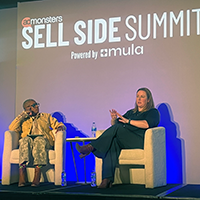Incentivized marketing is the art of creating incentivized leads for third party advertisers. By now, just about every Internet user has come across one of those colorful “shoot the duck, win a free Ipod” or “guess the celebrity, win an XBOX 360” ads, and more than one has actually taken up the invitation. Essentially, incentivized marketing is about offering your customers a great gift, like a free Ipod, flat screen TV, or $50 gift card, in exchange for them filling out a sponsored marketing trial or offer.
Does incentivized marketing work? Gratis Internet, operator of freeipods.com, made over $US 5 million dollars its first year giving away Ipods. In 2004, the company whose key customers include Citibank, Blockbuster, Columbia House, and BMG, had revenues of $US 20.5 million. Gratis’ three-year growth of 2,350 percent propelled the company’s fast ascension to the rank of 18th fastest growing company in the INC. 500 index. There are numerous smaller and even bigger players in the space that are doing just as well. Needless to say, incentivized marketing is a booming industry and from the looks of it, it does appear to work.
The incentives space is changing fast. The industry has already gone through its introduction stage, on the tail end of its growth, and beginnings of maturity stage– all in a matter of a few years. The concept started as simple “sign up for an offer, get a free nominal gift (such as a dvd),” but with the rampant growth of the market and emergence of countless competitors, the business has had to evolve rapidly. Each phase has brought its unique challenges and depending on stage of development, new strategies adapted at each step.
The traditional Industry (Product) Life Cycle, which many of you probably covered in Marketing 101, allows us to view the online incentive marketing space with some structure. In most any industry, firm numbers first rise as innovation opportunities fuel entry, and then later fall when the relative failure to innovate prompts exit. Although several variations of the Industry Life Cycle exist, four basic stages are apparent in all: introduction, growth, maturity, and decline.
If you look at the online progression of the incentive space, it was once as straightforward as: visitor enters email address, completes offer, company sends gift to qualified users. Acquisition costs were low (as low as $0.30 CPA just a year ago), requirements to qualify for the incentive straightforward, and everyone was happy. The influx of new competition, all vying for the same consumers has created an arms race to who can now offers the most appealing (higher and higher premium) incentives and who can pay the most for distribution. This heated competition to create the best performing offers in combination with the highest payouts has lead to more and more sophisticated monetization paths.
The growth and resulting competition has also resulted in more companies utilizing questionable tactics to gain a competitive edge. Some direct marketers employing incentivized marketing tactics have grown increasingly aggressive and desperate in creating winning promotions, which induces them to run promotions that are almost beyond belief. As opposed to your regular $50 gift card, they dangle 50-inch flat screen TVs and $500 gift cards. How are they able to dish out such high-priced prizes? They don’t! You see buried deep within the Terms and Conditions, which most consumers fail to read or even notice, is a clause that requires the consumer to fulfill several marketing offers in addition to carrying out some fairly ambiguous steps. In such cases, hardly ever does the consumer completely fulfill what is required, relieving the direct marketer of having to carry out his or her side of the bargain.
Of course, when customers are left holding the bag, they get mad or become dissatisfied and the whole system is ultimately rendered unsustainable. Scott Rewick, an ODM (Original Direct Marketer) said it best in a DM Confidential article not so long ago: “Bottom line here is that the consumer is exceedingly unlikely ever to receive their gift, you’ve probably sent one pissed off customer to the very marketers that pay you for that lead, and we are inviting FTC scrutiny. The CPA Advertisers (along with consumers) that support this industry are the ones getting screwed.” A handful of advertisers, in fact, have already turned their backs on CPA or incentivized marketing schemes based on the low quality leads and the customer service horror stories that is to be expected with this type of extreme and devious marketing.
The increased pressure to perform, along with an influx of many fly-by-night companies, has degraded the creditability of this industry in the eyes of many outsiders (despite legitimate players). All is not lost however as the long-term, committed players will evolve their internal capabilities and processes enough to set them apart from imitators. Gratis Internet, for example, hosts an “Info Center” for its freeipods.com website that includes up-to-date customer testimonials and a 10-page gallery composed of photos of satisfied customers. Companies that fail to deliver and innovate, not only on the technology and product side, but also on the internal processes and service side of the business, will naturally exit.
The online incentive space has gone through its first two-and-a-half Life Stages so fast that it makes me wonder how long its maturity stage will last. And, what will lead to its decline? Will it be saturation of the market and growing savviness of consumers? Will it be legal legislation? Or even regulation from direct marketers who start to get more selective on how their CPA offers are promoted? Everyone has a different opinion.
Sources:
http://clients.freelancewebdesigner.com/jw/20110620-dmctest/blogs/column/
Affiliate_Marketing_Tips/307/
http://clients.freelancewebdesigner.com/jw/20110620-dmctest/blogs/category/
Incentive_Marketing/449/
http://clients.freelancewebdesigner.com/jw/20110620-dmctest/blogs/column/
Affiliate_Marketing_Tips/259/



